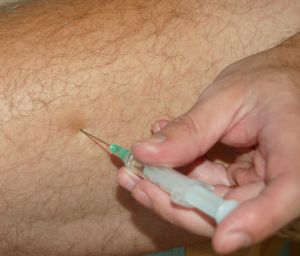Although Guillain Barre Syndrome is thought to be the result of an infectious illness in the weeks prior to the onset of GBS (Over 60% of GBS cases are associated with prior acute infection by several bacterial species and viruses), the Federal Court of Claims has come to accept that GBS can also be caused by vaccination, specifically the influenza / flu vaccination. The objective in filing a claim with the Vaccine Injury Compensation Program (VICP) is to demonstrate the substantially probability that the influenza vaccine activated the immune system against components of the nervous system similar to its activation by viral or bacterial infection in non-vaccinated GBS cases.

The most commonly proposed mechanism for the development of autoimmune disease is molecular mimicry. This is a strong theory advocated by neurologist experts in arguing for the role of flu vaccination in the development of GBS. Molecular mimicry refers to a situation where the pathogen and host (ie. the human body) share nearly identical antigens, which induces an antibody and T cell immune response that is cross reactive, meaning the antibody reacts with similar sites across a wide spectrum of proteins. There are multiple ways in which an immune response can become cross-reactive. The strongest evidence for the molecular mimicry hypothesis has come from discoveries in research with jejuni strains, the most common pathogen associated with GBS.
A neurologist expert in a vaccine causation case will argue that it is substantially probable that the influenza vaccine triggered the immunological reaction that causes GBS or variant Miller Fisher Syndrome by molecular mimicry or non specific activation of the immune system. The immune system could recognize the vaccine and the victim may share nearly identical antigens, which induces an antibody and T cell immune response that is cross reactive. Many Special Masters, who review and decide GBS flu cases filed in the Court of Federal Claims, are aware of molecular mimicry, and the theory is generally widely accepted as a basis for causation. Lately, the Department of Health and Human Services has accepted the link between flu vaccine and GBS provided there is no evidence of an alterative form of causation such as a gastrointestinal or upper respiratory illness. Consequently, GBS flu cases are proceeding much more quickly through the Vaccine Injury Compensation Program without the need for neurology experts. Baseluos Law Firm is well versed in the handling of GBS flu vaccine injury cases, and has obtained settlements of several hundred thousand dollars each for individual claimants.
 San Antonio Injury Attorney Blog
San Antonio Injury Attorney Blog




